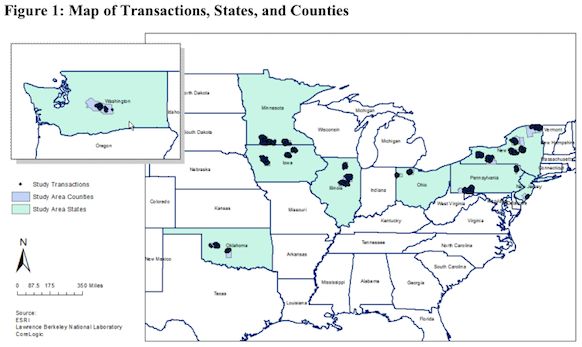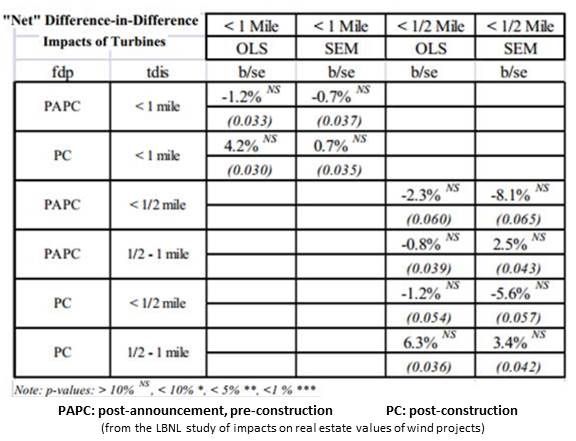Property values are not lowered by nearby wind projects, according to new research from Lawrence Berkeley National Laboratory.
This is an important finding, because mandates in windy states and wind’s increasingly competitive LCOE are expected to drive U.S. wind capacity growth of 5 gigawatts to 6 gigawatts per year. This will force the 2,750 new turbines built each year to encroach on populated areas in places like New York, New England, the Mid-Atlantic and upper Midwest.
Opponents of wind development have created the impression in the popular media that wind projects deflate property values, according to LBNL researcher Ben Hoen. With the findings reported in the LBNL publication A Spatial Hedonic Analysis of the Effects of Wind Energy Facilities on Surrounding Property Values in the United States, wind developers will be able to dispel a significant local concern.
Hoen and his fellow researchers obtained data from the sales of more than 50,000 homes located within ten miles of a wind project. The data set covered 27 counties in nine states and 67 different wind installations. The data covered 1,198 sales of homes that were located within a mile of a wind turbine. It is the most comprehensive database yet built for such a study, Hoen said.

The researchers broke their findings down according to what the home value was before the wind project was announced, what it was after the project was announced but before construction started, and what it was during and after construction.
“The core results of our analysis consistently show no sizable, statistically significant impact of wind turbines on nearby property values,” the paper concluded. “The property-value effect of wind turbines is likely to be small, on average, if it is present at all.”
The researchers used statistical methods to control for and compare the impacts of other “disamenities” like high-voltage transmission lines, landfills, and noisy roads. They also controlled for changes in communities after wind projects were announced and after they were completed.
“Our sample size and analytical methods enabled us to bracket the size of effects that would be detected, if those effects were present at all,” the paper said. “If effects do exist, either the average impacts are relatively small (within the margin of error in the models) and/or sporadic (impacting only a small subset of homes).”
The researchers assessed homes one-half mile and one mile from the wind installations and analyzed price data with two statistical methods. One was an ordinary least squares model and the other was a spatial-process model. Hoen said the ordinary least squares model incorporated more data and the spatial-process model was essentially an accuracy check.
The best of the accumulated numbers showed a negative 1.2 percent impact on home values at one-half mile and a positive 4.2 percent impact at one mile. But neither is statistically significant, Hoen stressed, because the margin of error for the half-mile calculations is +/- 9 percent and +/- 4.9 percent for the one-mile calculations.
“We tried every way possible to produce evidence of a negative effect on home values from wind project development,” Hoen said. “But we failed.”




